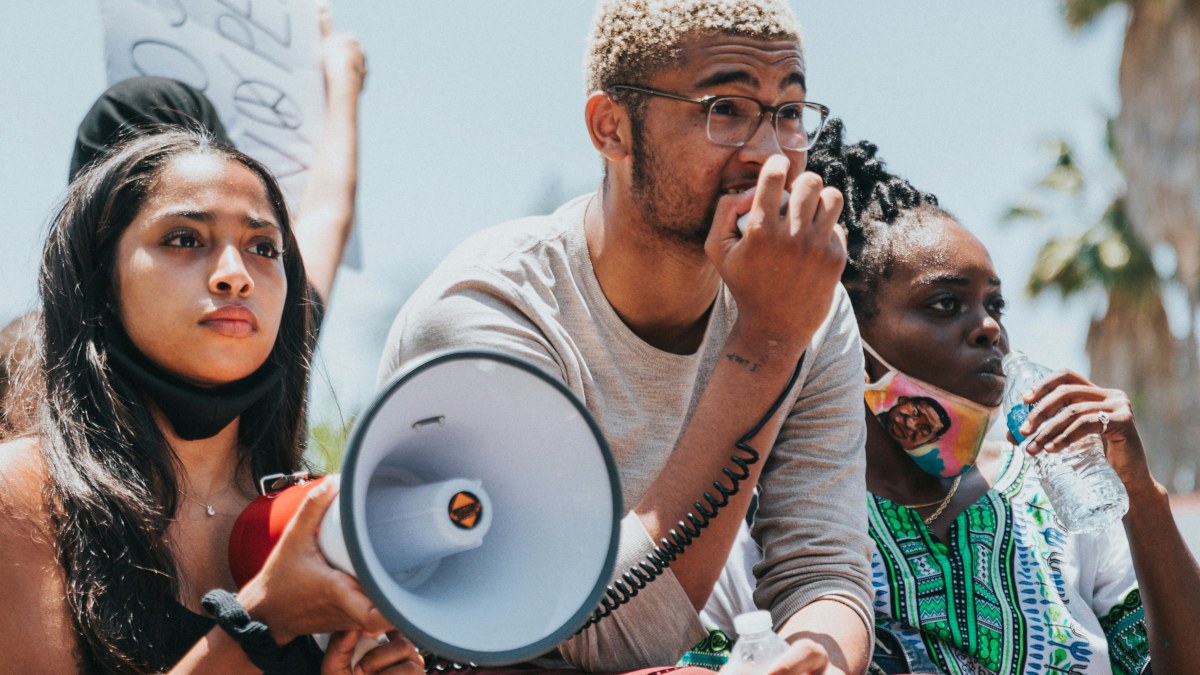A wave of student protests has swept through universities in the United States and is now echoing around the world. In an era rife with new forms of contention and increasing polarisation, it is vital for businesses and organisations striving for cultural relevance — especially those focused on trends, insights and forecasting — to understand these issues, as they unavoidably shape future cultural narratives. Cultural relevance is not merely a buzzword; it also inevitably involves understanding topics that businesses are traditionally uncomfortable engaging with.
Recognising emerging cultural narratives
The longitudinal ethnographic research within social movements has consistently shown that when young people voice their grievances through public spectacles such as mobilisations, occupations, and sit-ins, they do more than express discontent. They actively challenge the established status quo and outline visions of the world they seek to create. Youth activism and student protests go beyond simple expressions of dissent; they are instrumental in shaping future cultural narratives. Viewing protesting students as dynamic cultural networks, where diverse actors engage in power struggles to define the meanings of their protests, highlights their importance beyond mere political contestation and discursive exchanges.
Student protest cultures have consistently transformed universities into hotbeds of civil disobedience across generations. They attempted to champion democracy, human rights, and social justice. Sit-ins, occupations, and encampments have long been emblematic of these protests, spanning decades and addressing a broad spectrum of injustices worldwide, including issues related to race, gender, inequality, authoritarianism, environmental decay, as well as the role of the universities vis-a-vis their relationship with political, economic and private institutions. The legacy of student activism and the rejuvenation of political struggles by young people include numerous significant movements, such as the global upheavals of May 1968; the anti-Vietnam War and Civil Rights movements in the United States; the 1976 Soweto uprising against apartheid in South Africa; the 1989 student mobilisations that spurred the Velvet Revolution in Czechoslovakia; the Occupy movement; the Arab Spring; student uprisings in Chile; the anti-debt student protests following the 2008 financial crash; the Umbrella Movement in Hong Kong; the Rhodes Must Fall and Black Lives Matter movements; Fridays For Future school strikes for climate change; and feminist protests in Poland and across Central Europe.
Before they capture the spotlight as trending topics in marketing reports and flashy advertising campaigns, social movements and their causes are rarely popular when they first emerge. Students are particularly often disparaged, labelled as ‘troublemakers’, ‘naive’, ‘inexperienced’, ‘woke’ or worse. Despite these adverse perceptions, such movements are instrumental in reshaping emerging cultural narratives.
They elevate critical issues like racial justice, diversity and inclusion, reproductive rights, and climate change to the forefront of mainstream discussions. Additionally, some movements significantly influenced debates on foreign policy and the legacies of political regimes. They embody a living foresight, forging the culture of tomorrow and exercising visionary pathways for emerging social change.
Cultural relevance — an intersectional approach
The emergence of student protest cultures over time illustrates the broad spectrum of issues tackled by student activism worldwide, challenges the arbitrariness of generational labels such as ‘Gen Z’, ‘millennials’, and ‘baby boomers’, and questions the stereotypes that these labels often perpetuate and their use in culturally relevant insights and strategies.
TikTok, for instance, has become a key platform for Gen Z, turning its creative tools into vehicles for playful activism, allowing users to convey social justice messages through humour and #challenges, such as the disruption of Donald Trump’s 2020 Tulsa rally or raising awareness among politically active groups like war influencers.
At the same time, Gen Z is not the first to use social media for protests. The ‘Zapatista effect’ refers to the use of computer networks for activism by the Zapatista movement in Mexico in the early 1990s. Similarly, the Arab Spring, often referred to as the Twitter revolutions, used social media for coordination, information dissemination, and enabling communication that would otherwise have been impossible at the time. In other words, digital activism transcends generational labels and is part of a broader technological evolution.
Critically, the reliance on popular generational labels often overshadows significant influences like period effects — universal experiences such as the birth of the Web, the 2008 financial crisis, the coronavirus pandemic, and political regimes enforcing policies like abortion bans or social benefit cuts. For example, most countries outside the Global North and Western Europe have not seen a ‘booming’ generation post World War II, due to divergent political trajectories. Furthermore, contemporary movements often build upon the legacies of past generations, as seen in recent feminist movements in Poland and Argentina, where abortion bans have been challenged for several decades and across multiple generations.
In the same manner, life-course effects such as graduating, marrying, divorcing, becoming a parent, or getting a first job also play a crucial role. Universities, for instance, serve as critical arenas for cultivating political activism, offering students the space to leverage their biographical advantage and to reflect on and act on societal issues, thus shaping future political landscapes. This intersectional approach emphasises that significant events impact people differently across social classes, statuses, and genders. Ignoring this would negatively affect the quality of the insights and strategies based on them.
Towards cultural fluency
Businesses and organisations spend excessive time analysing Gen Z. Yet recent consumer boycotts reveal their failure in cultural fluency and in grasping young people’s real grievances and the historical, local, and cultural contexts in which these grievances occur. While boycotts may not have a long-term impact on business, they can often be avoided through a more holistic understanding of the world in which a business operates.
This involves looking at the concerns of young people without the cloud of stigmatising tropes, distinguishing a good story from science, and actual trends from anecdotes.
Without a real understanding of the cultural, historical and local contexts of young people’s concerns, analysing and predicting cultural narratives in today’s rapidly polarising world becomes futile.
Featured image: Nathan Dumlao / Unsplash



























